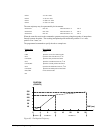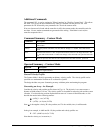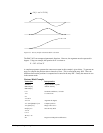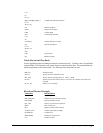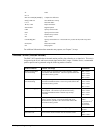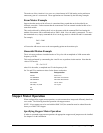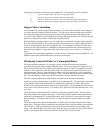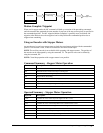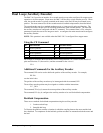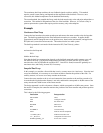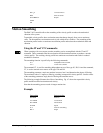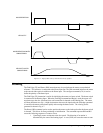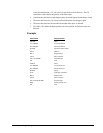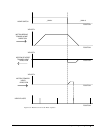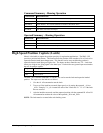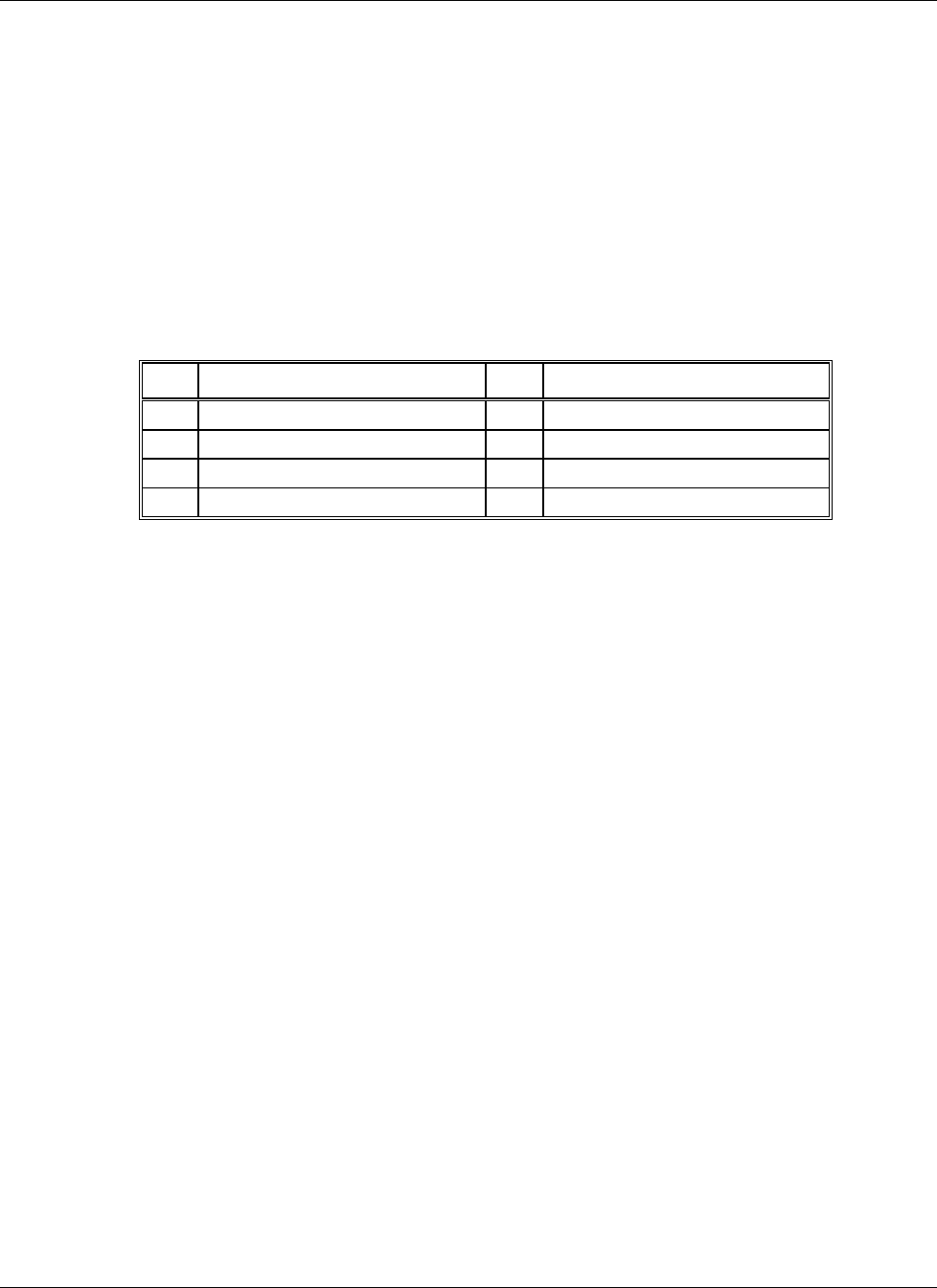
98 • Chapter 6 Programming Motion DMC-3425
Dual Loop (Auxiliary Encoder)
The DMC-3415 provides an interface for a second encoder except when configured for stepper motor
operation or circular compare. Please note, the DMC-3425 has only a single encoder per axis. When
used, the second encoder is typically mounted on the motor or the load, but may be mounted in any
position. The most common use for the second encoder is backlash compensation, described below.
The second encoder may be a standard quadrature type, or it may provide pulse and direction. The
controller also offers the provision for inverting the direction of the encoder rotation. The main and
the auxiliary encoders are configured with the CE command. The command form is CEa, where the
parameter a equals the sum of two integers m and n. m configures the main encoder and n configures
the auxiliary encoder.
NOTE: This operation is not available when the DMC-3415 is configured for a stepper motor.
Using the CE Command
m= Main Encoder n= Second Encoder
0 Normal quadrature 0 Normal quadrature
1 Pulse & direction 4 Pulse & direction
2 Reverse quadrature 8 Reversed quadrature
3 Reverse pulse & direction 12 Reversed pulse & direction
For example, to configure the main encoder for reversed quadrature, m=2, and a second encoder of
pulse and direction, n=4, the total is 6, and the command for the A axis is
CE 6
Additional Commands for the Auxiliary Encoder
The command, DEa can be used to define the position of the auxiliary encoder. For example,
DE 500
sets the initial value.
The position of the auxiliary encoder may be interrogated with the command, DE?.
The auxiliary encoder position may be assigned to variables with the instructions
V1= _DEA
The command, TD a,b,c,d, returns the current position of the auxiliary encoder.
The command, DV a,b,c,d, configures the auxiliary encoder to be used for backlash compensation.
Backlash Compensation
There are two methods for backlash compensation using the auxiliary encoder:
1. Continuous dual loop
2. Sampled dual loop
To illustrate the problem, consider a situation in which the coupling between the motor and the load
has a backlash. To compensate for the backlash, position encoders are mounted on both the motor and
the load.



